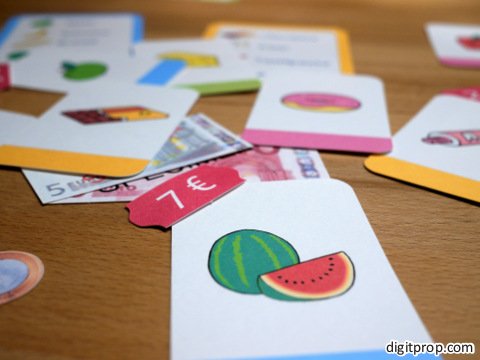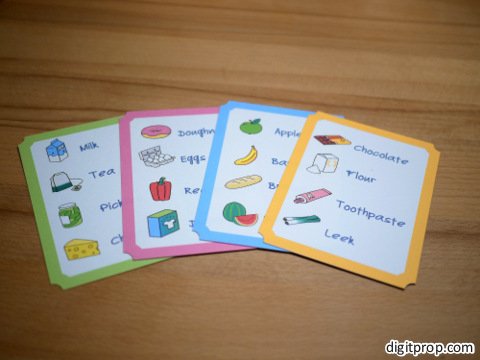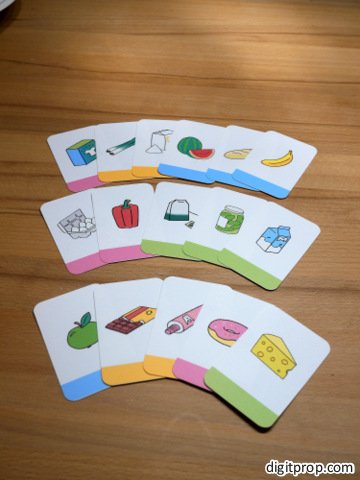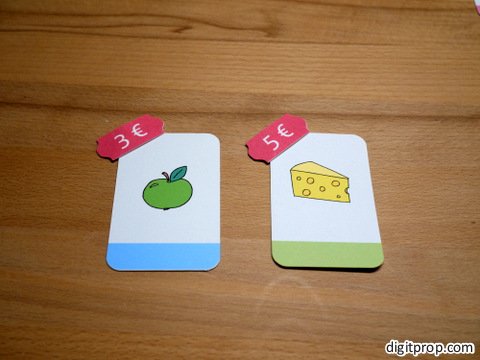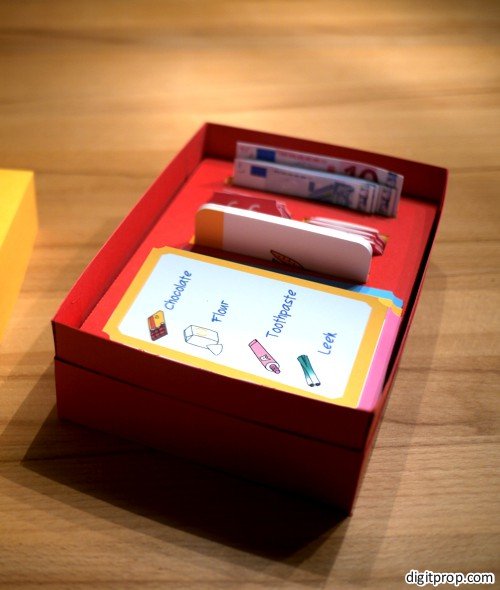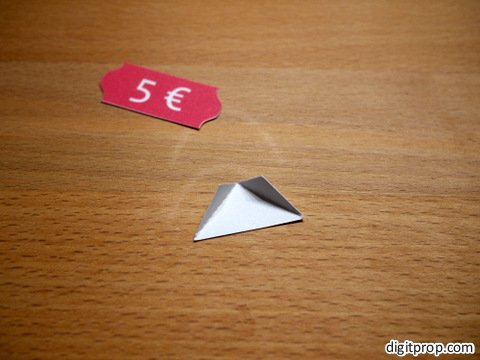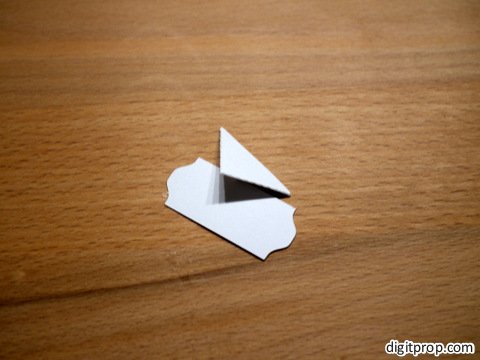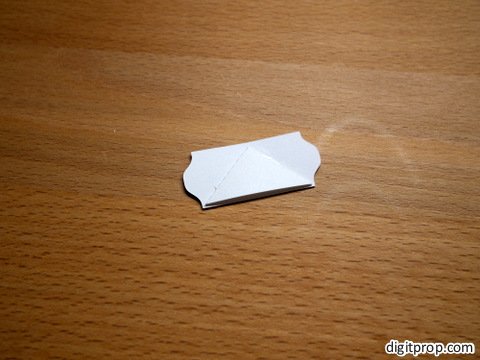Here is something for kids learning basic math: The groceries game is about going to the supermarket and shopping for everyday groceries.
So how does it work? First of all, this is not a competitive game. There is no winner or loser. You just buy and sell items to your co-players. However, I found that first graders just love it. In fact, removing the element of competition seems to make the actual transaction of buying much more fun for them.
There are four color-coded shopping lists:
Each player gets one list. Then there are sixteen item cards. These are distributed more or less randomly among players, but pay attention that players don’t get any cards already on their shopping list. If they do, just exchange those cards between players.
Now give everybody enough cash for buying. The exact amount doesn’t matter, as you can simply refill their budget from the bank if they run out of money (did I mention this was not competitive?).
Then, each player puts price tags on the items on their hand. It doesn’t actually matter what values they assign, but it should be a good mixture of different values.
Ok, now we are ready to do the groceries. One player starts and picks one of the items on their list. They then buy that item from the player who has that item on stock. They pay and get the item, plus potentially the correct amount of change.
That’s it – simply buying and selling. Sounds awfully boring for grown-ups, but I have to say I really enjoyed the relaxed game play with my kids. It’s quite a contrast to strategic card and board games. And kids love it.
The game requires basic math, adding and subtracting in the 1-10 range.
You can make the game yourself (see below), or – if you want to save time – you can buy it from my shop.
The game is very easy to make. Simply print the template and cut out the required cards, price tags and money. I included Euro notes and coins, but I strongly recommend using play money from a toy store. The money templates I provide are limited by legal requirements, and thus relatively ugly (primarily the notes which have to have the word ‘specimen’ printed across).
As for the price tags, they have small sleeves at their back, so that they can be attached to the item cards. Here is how you make the sleeves:
Also, I have added a template for a nice box for the game. It’s significantly more difficult than the rest, so it’s up to you to decide whether it’s worth it. I recommend strong cardboard for the box, at least 200g/sqm. If you build it, I recommend using colored paper, and perhaps different colors for the bottom and lid. Also, the box template barely fits an A4 sheet, so on page 2 – the cover – the template extends to the full page width.
- Game contents
- Game box
- Money (Euro notes and coins)
- Alternative US dollar price tags
- Game contents with German labels
